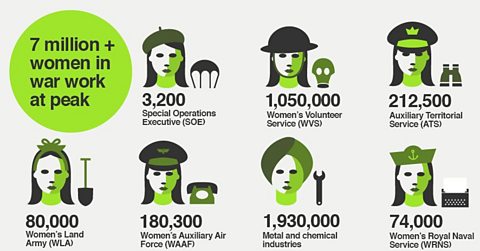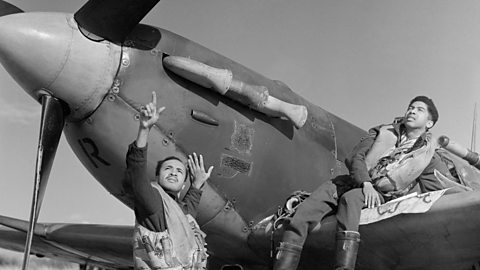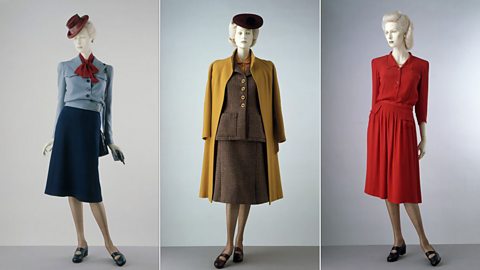The call to arms
When the Second World War broke out in 1939 just over five million women were in work.
By 1943 that number stood well in excess of seven million. As men from all over the country joined the fight against fascism, so women were called upon to help – and in an age of total war they were now in the midst of the action.
Never before had the boundaries between home front and front line been so blurred. More than 40,000 civilians were killed as enemy bombs dropped on Britain’s towns and cities. From housewives and mothers to factory workers and farm hands, women across the country were central to the war effort. How did this experience change their lives? And once the guns fell silent in 1945, did these women see any lasting change to their place in society?
In numbers: Women in WW2

CLICKABLE: In their own words
Select the images and find out what life in World War Two was really like for the women who answered the government's call for help.
Home sweet home?
Once the jubilation at war's end had subsided, did women have anything else to celebrate?
Women were praised for their wartime work, but expected to make way for the returning troops. As after WW1, there was an assumption that their temporary roles had been specifically linked to wartime. The government encouraged a return to domesticity. By 1951 the number of working women had returned almost to the pre-war level and a bar on married women working continued in many jobs. Trade unions still defended higher wages for men, despite an increase in women’s union membership.
The Women’s Land Army continued until 1950 – due to post-war food shortages. Permanent Women’s Services had been created the previous year, with a primarily supporting role. They could not fly aircraft, command ships or fire weapons.
A lasting legacy?
Mothers told their daughters what they had done during the war, and how their horizons had been limited afterwards. The 60s and 70s saw the emergence of feminist groups and heightened awareness of gender inequality – campaigning for more rights and greater opportunities saw very many more women aware of their potential and the need for change.
Learn more about this topic:
WW2: How did the heroes of the Caribbean help win the war? document
When Britain called on the Caribbean for support in World War Two, more than 10,000 men and women crossed the Atlantic to help the war effort.

WW2: Did the war introduce designer fashion to our high streets? document
The Second World War is an unlikely time for a fashion moment - and yet the war fundamentally changed the relationship between designers and the High Street.

WW2: How did the British plan to celebrate VE Day? document
VE Day or Victory in Europe Day was on 8 May 1945, following Germany's surrender in WW2. But how did Britain plan for one of the greatest days in its history?
